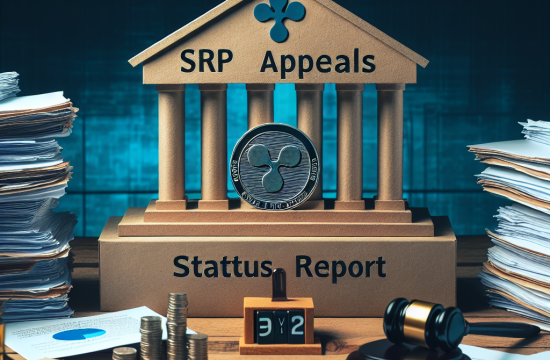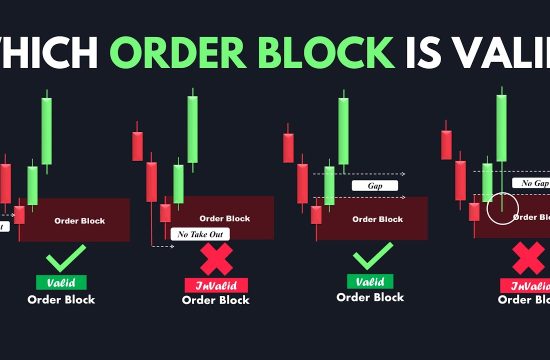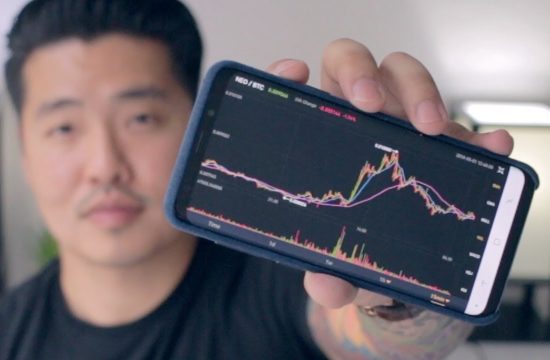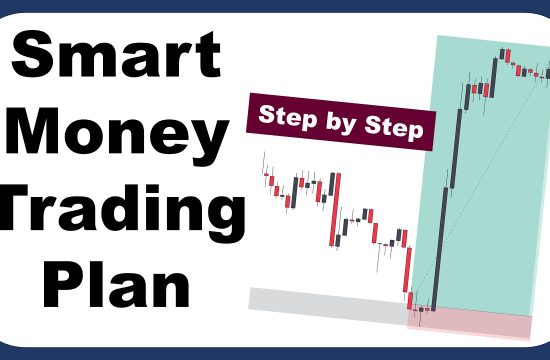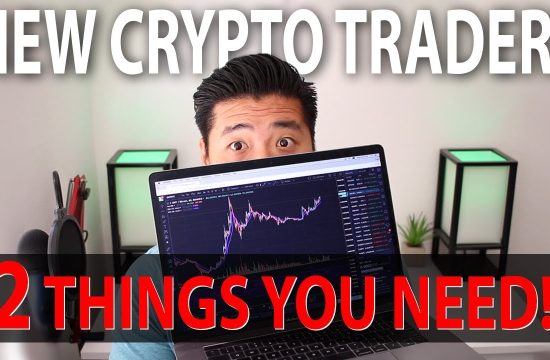1. Setting Clear Goals
Defining Your Trading Objectives
When I started in the world of Bitcoin trading, one of the first things I learned was the importance of setting clear goals. It’s like setting your GPS before embarking on a road trip—you need to know your destination. Think about what you want to achieve; are you aiming for short-term profits, or are you looking to hold Bitcoin long-term?
Here’s where specificity shines. Instead of saying, “I want to make money,” try defining it further. Perhaps you want to make $5,000 within the next six months or double your current investment by the year’s end. By setting quantifiable targets, you’re not just winging it; you’re laying down a roadmap for your journey.
Lastly, don’t forget to revisit and update your goals regularly. The crypto market is ever-evolving, and so are your personal circumstances. Evaluating your goals can help you adapt your strategy as situations change, keeping you on track.
Understanding Risk Tolerance
Risk tolerance is a huge factor in trading. Knowing how much you’re willing to lose before you start hyperventilating is crucial. Personally, I had to come to grips with the fact that I could stomach losing 10% of my investment but would probably freak out over 25%. Everyone’s threshold varies, so it’s essential to know yours.
To gauge your risk tolerance, consider using hypothetical trading scenarios. Play around with numbers and see how you feel about potential losses. It might feel scary, but it’s all about getting a grip on your emotional responses and adjusting your trading plan accordingly.
Moreover, factor in your financial situation. If you’re living paycheck to paycheck, maybe setting a higher risk tolerance isn’t wise. Your risk tolerance should reflect an understanding of your overall financial well-being and trading experience.
Time Commitment
Another point I can’t emphasize enough is the amount of time you’re willing to dedicate. If you’re just jumping into Bitcoin trading and your schedule is jam-packed, consider if you have the bandwidth. I remember the first few weeks, I was glued to my screen, but I realized that wasn’t sustainable—especially with a full-time job on my plate.
Trading isn’t a ‘one and done’ deal; it requires regular monitoring and research. You can start with a few hours a week to analyze trends and make trades, and gradually scale up as you become more comfortable. Just be realistic about what your daily or weekly efforts can look like.
Ultimately, aligning your time commitment with your trading goals will help you design an effective plan. Trust me; finding that balance is key to keeping your sanity intact while navigating the crypto space.
2. Research and Market Analysis
Staying Informed
Market dynamics can change in a matter of minutes, so staying informed is paramount. I remember embarking on my research journey with wide eyes, reading countless articles and watching videos here and there. Eventually, I figured out what sources of information resonated most with me. It takes some trial and error, but once you find your go-to resources, your research can become much smoother.
Certain websites, forums, and even Twitter accounts can provide a goldmine of knowledge. Just remember, it’s crucial to balance opinions and data with your own analysis. Don’t let someone else’s enthusiasm or fear dictate your trading decisions. It’s about crafting your own informed perspective.
Additionally, consider subscribing to newsletters that focus on Bitcoin and cryptocurrency markets—these can often provide insights that are time-saving, offering updates straight to your inbox. It can be a big help in condensing information so you can focus on analysis and trading!
Technical vs. Fundamental Analysis
Alright, let’s dive deeper! When it comes to market analysis, you’ll often hear about two schools of thought: technical and fundamental analysis. Personally, I like to combine both strategies. Fundamental analysis involves looking at the underlying factors driving Bitcoin’s value, like market adoption and regulation trends. It helps provide context to any movements in the price.
On the other hand, technical analysis focuses purely on price movements and patterns. Charts and indicators can be friends of yours if you learn how to read them. I’ve found some of my best trades came from analyzing support and resistance levels. It’s all about knowing when to jump in or pull back.
The beauty of combining both methods is that you’re allowed to make informed decisions from multiple angles. It takes practice, but once you get it, you’ll feel much more confident in your trading approach. Just keep playing with both techniques until you find your sweet spot!
Keeping an Eye on Market Trends
Trends in the Bitcoin market can feel like the ocean’s tides—sometimes steady, sometimes unpredictable. Keeping an eye on these trends ensures that your trading plan stays relevant. I introduced a habit where I’d spend a few moments each day just looking for patterns in price action or news developments. It feels time-consuming, but it made a difference in my decision-making.
Engaging with communities—like Reddit or Twitter accounts focused on Bitcoin—has also proved valuable. It’s not just about charts; it’s about the conversation happening around them. You’ll stumble on insights that would have otherwise gone unnoticed simply by sharing ideas with fellow enthusiasts.
Moreover, take advantage of tools like Google Trends to see what others are searching for regarding Bitcoin. A sudden spike in searches can lead to price movements. It’s just one more tool in your high-powered trading belt.
3. Developing a Risk Management Strategy
Understanding Position Sizing
Position sizing is really where the rubber meets the road in risk management. It’s simple—deciding how much of your account to risk on a single trade. Remember my earlier talk about risk tolerance? That’s where it comes into play. I usually stick to the rule of not risking more than 1-2% of my total account on a single trade. It ensures I can stick around for the long haul.
To figure out your position size, you need to consider your stop-loss placement and the distance from your entry price. For example, if you’re risking $100 on a trade and your stop loss is set $10 away from your entry, you can only enter with 10 units. It’s a straightforward calculation, but it pays off in maintaining your bankroll.
Ultimately, a solid position sizing strategy helps you plan for when things go awry. If you experience losses (and we all do), you’ll keep your account active and learn for the next trade instead of feeling defeated.
Setting Stop-Loss and Take-Profit Levels
Honestly, setting stop-loss and take-profit levels is one of the best decisions I’ve ever made as a trader. Imagine this: you place a trade but get busy with life and forget to check it. If you don’t have stop-loss and take-profit levels in place, you could find yourself holding onto losses that get out of control. That was me more than once!
Stop-loss orders help you cap your losses by automatically selling a position once it hits a predetermined price. Similarly, take-profit orders secure your profits by selling when your asset reaches a certain price. I often find the best practice is to use a combination of both, ensuring I have a defined exit strategy. That way, I can sleep easier at night.
Make this part of your trading strategy second nature. You’ll save yourself a lot of stress and anxiety when you’re not glued to the screen, worrying about every tick of the price.
Adapting to Market Conditions
Trading is a dance between times of high volatility and bouts of calm. You’ve got to be adaptable, and that often means being consistent with your strategy but flexible with how you execute it. When I first started, there were periods where I’d stick rigidly to my plans without considering market conditions—and boy, did that lead me to some painful lessons!
For instance, during major price movements like market corrections or bull runs, it may be wise to adjust your position sizing and risk management approach. Understanding when to dial back (or ramp up) is crucial and knowing how to read the market’s signals will improve your adaptability.
Always keep learning and remain open-minded about your strategies. You don’t want rigid plans to box you in; treat them as guidelines that can evolve as further data comes in.
4. Keeping Emotions in Check
Recognizing Fear and Greed
Ah, emotions—our constant companions in trading. Fear and greed can be ruthless! I’ve certainly felt those feelings bubbling over when I’ve seen prices fluctuate. Keeping a level head amidst market chaos is key, and it’s something I still work on every day.
When things go well and prices soar, it’s easy to feel invincible, leading to impulsive decisions. Conversely, during downturns, fear can grip you, making you panic-sell without a clear strategy. Acknowledge these feelings, but don’t let them dictate your trading actions.
Take a step back whenever you notice your emotions flaring up. A simple pause can sometimes transform a bad decision into a well-thought-through move. Also, I find that journaling my feelings during trades helps me track patterns, making it easier to understand my emotional responses over time.
Creating a Trading Routine
Creating a regular trading routine has been pivotal for me. By establishing a consistent set of actions—like daily or weekly market analysis, reviewing trades, and setting goals—I create a sense of normalcy. This routine offers structure and can reduce the emotional highs and lows that might drive impulsiveness.
I dedicate specific times for research, analyzing trades, and adjusting my strategy. This consistency focused me on the task rather than getting lost in the frenzy of market movements.
Find a routine that works best for you. Maybe it’s a weekend review of your trades or a lunchtime check-in during the week. Just having a plan keeps you grounded and helps maintain balance in the emotional rollercoaster of trading.
Learning from Mistakes
Every trader will make mistakes—count on it. The key isn’t about avoiding them but learning from them. Believe me, I’ve had some epic fails, whether it was chasing a price point or ignoring my stop-loss. It stings at the moment, but those experiences are invaluable for growth.
Keep a trading journal where you document your trades, decisions, and the emotions behind them. Reviewing your trades, especially the losses, helps you identify patterns and areas for improvement. Each mistake is an opportunity to refine your strategy and become a more disciplined trader.
After all, trading is a long-term game. Embrace your mishaps as part of the journey rather than letting them discourage you. With each stumble, you’ll develop into a sharper, more informed trader!
5. Continuous Education and Adjustment
Staying Updated with Market Trends
The crypto market is like a wild stallion—ever-changing and full of surprises! Staying updated with new developments, laws, and trends is crucial for your ongoing success. I can’t stress enough how valuable continuous education has been for me in this field. I always make it a point to read up on the latest crypto news daily.
There’s a constant influx of information, so segment your learning time wisely. Dedicate time each week to read articles, books, and reliable news sources that keep you informed about the Bitcoin landscape. This commitment will help you foresee potential market movements and adjust your strategies accordingly.
Consider following thought leaders in the space, attending webinars, or even joining trading communities. Don’t underestimate the power of community knowledge—it can lead to golden insights that books alone may not offer!
Evaluating Your Trading Plan
After immersing myself in the market, I quickly learned that my trading plan isn’t set in stone. It needs regular evaluations! At regular intervals—maybe monthly or quarterly—I recommend analyzing your trading performance and your overall strategy.
Ask yourself questions like: What worked? What didn’t? Did my emotional responses weigh heavily on my outcomes? It’s a critical reflection that can illuminate fundamental shifts you may want to consider in your plan. This appraisal is about growth—it allows you to pivot or double down on strategies that show promise.
Craft a solid review process, and you’ll be surprised at how your ability to adapt will positively impact your trading. Remember, flexibility is a cornerstone in this dynamic market!
Investing in Further Education
Lastly, never stop learning! Take courses on trading strategy, participate in workshops, or even enroll in a certification related to cryptocurrencies. I’ve found that honing my technical skills and overall market knowledge gives me more confidence and insight to make informed decisions.
Consider investing in online courses or resources that focus on advanced strategies and tech tools. There’s something so empowering about accruing knowledge and feeling that fire in your belly to improve as a trader.
Additionally, surround yourself with a network of knowledgeable traders. Learning from others’ experiences, whether in group discussions or informal talks, can open your eyes to different perspectives and trading techniques. It’s a great way to keep feeding your brain and heart in this journey.
FAQ
1. What is the most important part of a Bitcoin trading plan?
While many elements are critical, setting clear goals stands out as the foundation of any trading plan. Knowing what you aim to achieve helps you tailor your approach and decisions throughout your trading journey.
2. How often should I evaluate my trading plan?
It’s a good practice to evaluate your trading plan regularly, such as monthly or quarterly. This allows you to reflect on your performance and adapt your strategy as needed based on market conditions and personal experiences.
3. How can I keep my emotions in check while trading?
Creating a structured trading routine and recognizing your emotional triggers can help. Also, try developing a plan for handling emotions by implementing stop-loss and take-profit levels, thus reducing the stress of real-time trading decisions.
4. What resources are best for continuous education in Bitcoin trading?
Stay updated by reading reputable articles, subscribing to newsletters, and following crypto influencers. Joining trading communities or forums can also provide valuable insights and real-time discussions about market trends.
5. What should I do if I experience a significant loss in trading?
First, take a step back and evaluate the loss objectively. Utilize a trading journal to reflect on what happened, and learn from the experience without becoming emotionally reactive. Adjust your strategy if necessary, and remember that losses are part of the trading journey.
Related Content
- TradingView VWAP Indicator Tutorial (How to Use VWAP)
- SUI Coin Price News Today – Technical Analysis and Elliott Wave Analysis and Price Prediction!
- Nine Years Ago Today: Recalling The Bitcoin Exchange Failure That Was Much Bigger Than FTX
- Pro-Bitcoin Miami Mayor Francis Suarez Drops out of GOP Presidential Candidate Race
- Millennials Only Want This One Thing: Home Ownership





